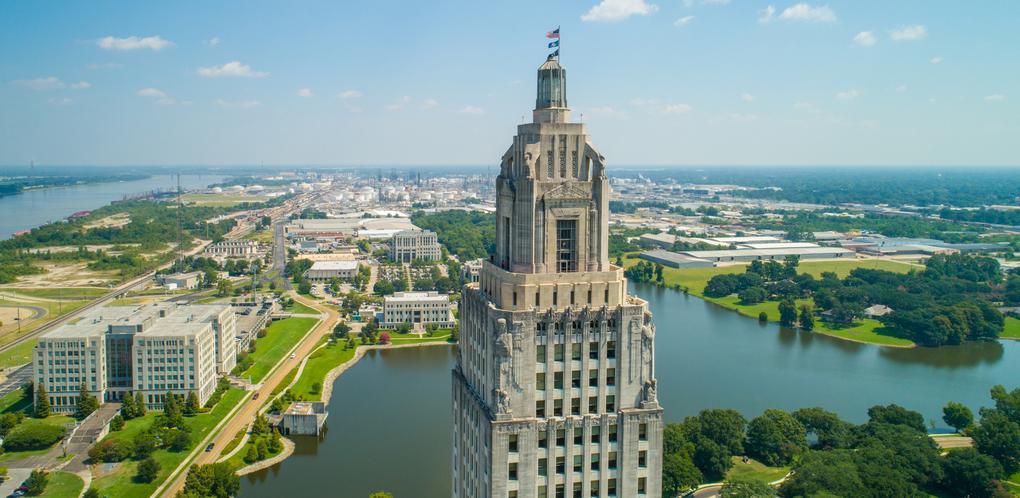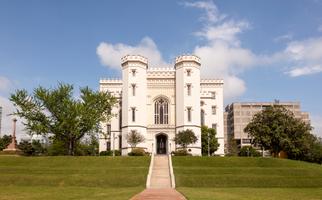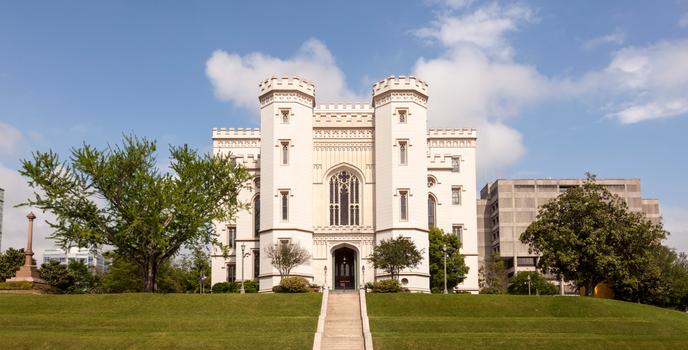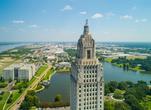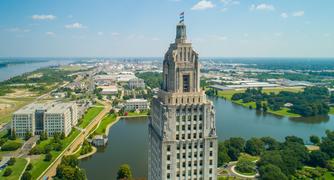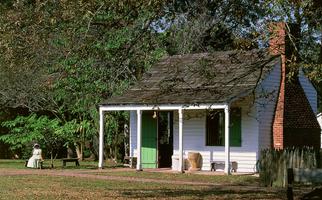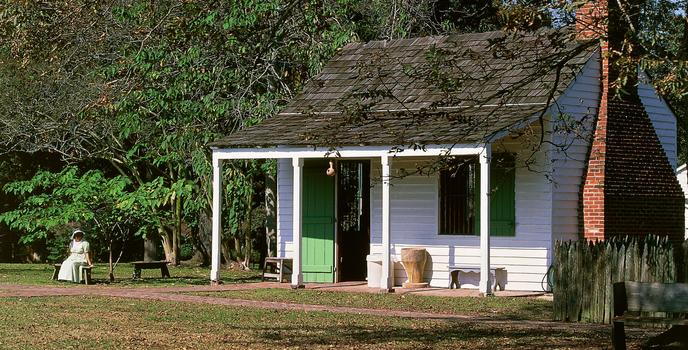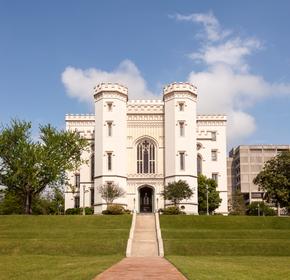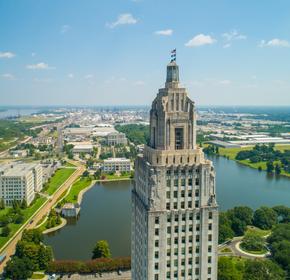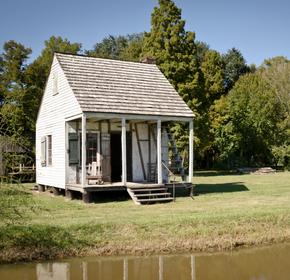1. Louisiana's Old State Capitol: The Louisiana Castle
In a state with a rich history and a reputation for colorful politics, it comes as no surprise that Louisiana's first statehouse was constructed to look and function like a castle. Withstanding fire and a war as obstinately as it endured scandals and bitter debates, the Gothic Revival-style Old State Capitol opened in 1852 on a magnolia tree-lined bluff overlooking the Mississippi River. Gutted by an accidental fire during the Civil War, its restoration in 1882 added more light as well as a stained glass dome and a sweeping grand staircase. Haunted, some say, by a senator who collapsed and died after a fiery debate, and lamented by Mark Twain, who once wrote "let dynamite finish what a charitable fire began," the grand Old Capitol survives as a National Historic Landmark and a must-see museum of Louisiana political history.
2. USS Kidd (DD-661): The Mississippi's Old Salt
With eight battle star commendations for its service in the Pacific during World War II, the USS Kidd (DD-661), the only Fletcher-class destroyer retaining its vintage war-time appearance, now rests on the Mississippi River as a veterans memorial and museum. More than 50 of her compartments are on display, along with the museum's full-scale replica of an Old Ironsides gun deck, several fighter planes, and an extensive collection of model ships.
3. Louisiana State Capitol: The Legacy of Kingfish
Constructed in only 14 months during the Great Depression for a modest $5 million, the Louisiana State Capitol rises 34 floors and 450 feet over downtown Baton Rouge as a legacy for Huey Long, the Kingfish, who served as both governor and U.S. Senator. The design of the nation's tallest capitol is loaded with symbolism, including the ornate lobby and legislative chambers, while the 27th-floor observation deck provides spectacular views of the city and river. The 30-acre capitol gardens feature magnolias, azaleas and live oaks, as well as the monument and the remains of Senator Long, who was assassinated at the capitol in 1935.
4. Magnolia Mound Plantation House: Hybrid Architecture From The West Indies and France
Representing the French Creole style of colonial architecture, the Magnolia Mound Plantation built in 1791 is one of Baton Rouge's oldest buildings. Constructed of cypress beams and a confection of mud and Spanish moss called bousillage, the plantation house museum showcases a number of structures, including an open-hearth kitchen, as well as decorative arts and furnishings that shaped the fascinating culture of Louisiana.
5. LSU Rural Life Museum: Raise A Glass For The Working Class
The 40-acre, outdoor Rural Life Museum portrays life as it was really lived in hardscrabble rural Louisiana during the 18th and 19th centuries. No Old South romanticism here: this is an educational museum with more than 30 authentic structures and thousands of relics and artifacts. Learn how sugar cane was processed, how plantation slaves received medical care, how farmers and craftsmen subsisted, and how a "dogtrot house" had its advantages during the Louisiana summer.
6. French Quarter: Vieux Carré
The oldest part of New Orleans, the French Quarter is the lifeblood of the city. Bourbon Street is its famous thoroughfare, full of the bars and clubs that give the city its wild reputation. Originally known for its Jazz scene, Preservation Hall still showcases local talent in a genuine atmosphere. The vibes continue outside of St. Louis Cathedral on Jackson Square, where there is always a street performance to behold.
7. Frenchmen Street: A Trip to the Jazz Age
The most authentic New Orleans experiences are now found along Frenchmen Street. Popular music venues along this stretch of the Marigny neighborhood include The Spotted Cat and Maison. Creole Cottages line the streets in this entertainment district, representative of New Orleans's distinctive style.

